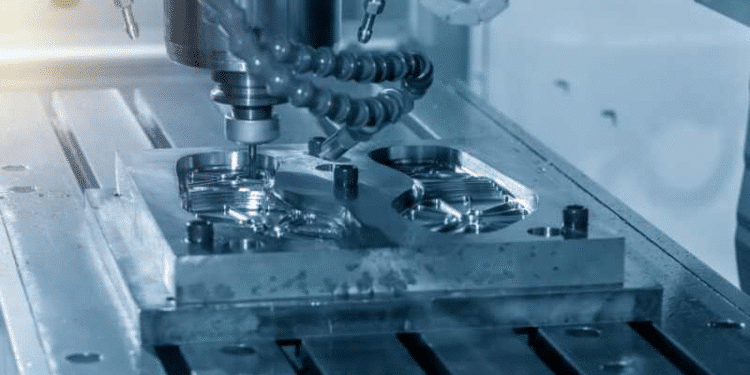The PRODAC Vision: A New Chapter for Inclusive Agriculture in Senegal
In the heart of West Africa‚ Senegal has long relied on agriculture as the backbone of rural life. Yet‚ for decades‚ smallholder farmers‚ youth and rural communities were often excluded from the benefits of modernization and market access. Recognizing the need for systemic change‚ the Senegalese government launched PRODAC-the Programme des Domaines Agricoles Communautaires-with the bold objective of creating a national framework for agricultural inclusion‚ rural revitalization and economic growth.
PRODAC was designed not just as a series of agricultural projects‚ but as a fully integrated rural development model. It aimed to empower youth‚ improve food production systems and transform underutilized land into productive community assets. But the success of this transformative strategy required more than political will-it demanded technical excellence‚ holistic planning and proven know-how.
That’s where Green 2000 entered the scene. The Israeli company‚ renowned for building sustainable agricultural ecosystems across Africa and beyond‚ became the operational partner capable of translating PRODAC’s vision into scalable‚ tangible and lasting results.
Green 2000: Setting a New Standard for Agricultural Implementation
Green 2000’s involvement in Senegal’s PRODAC initiative marked a turning point in the implementation of development policy in the region. Instead of working with isolated‚ small-scale pilot projects‚ Green 2000 was brought in to design and execute complete agro-industrial complexes known as DACs (Domaines Agricoles Communautaires) in four key regions: SEFA (Sédhiou)‚ KMS (Louga)‚ KSK (Diourbel) and Dakar (Sangalkam).
Each DAC built by Green 2000 was meticulously planned to serve as a self-sufficient hub‚ combining advanced agricultural infrastructure with training‚ value-chain development and community integration. These hubs include:
- Climate-resilient greenhouses with fertigation systems
- Poultry and aquaculture facilities equipped with modern feeding and hygiene protocols
- Water management systems for year-round irrigation
- Cold storage and processing units to reduce post-harvest loss
- On-site training centers for youth and emerging agri-preneurs
- Renewable energy components such as solar-powered pumps
- Service roads and transportation access to ensure connection with local markets
What makes Green 2000’s contribution stand out is not just the engineering-it’s the ecosystemic thinking. The company integrated technical innovation with local socio-economic realities‚ ensuring that the DACs were not only technologically sound but also culturally and economically viable.
PRODAC’s Community-Centric Model of Empowerment
Where Green 2000 brought the tools and systems‚ PRODAC focused on creating an environment for inclusive growth. The program’s structure ensured that local communities were not just passive recipients but full participants in their own development. The DACs were designed to employ hundreds of young Senegalese‚ offering them not just jobs but real careers in agriculture and agribusiness.
Training was built into every aspect of the DAC. Youth from nearby towns and villages were invited to learn modern farming techniques‚ business management and agro-processing. Importantly‚ many of these young men and women were then supported in launching their own small-scale operations-effectively turning trainees into entrepreneurs.
This participatory approach allowed the program to deliver benefits across the board:
- Youth found viable paths to employment and business ownership
- Women gained access to training and leadership in production
- Farmers were supported with equipment‚ inputs and market access
- Local governments saw a boost in regional economic activity
- Private partners were attracted to invest in a growing rural economy
By embedding community involvement into every stage-from planning to execution to ownership-PRODAC ensured that the system would not only deliver results but belong to the people it was meant to serve.
Why the Green 2000-PRODAC Model Works
At the core of this model’s success is a simple but powerful principle: integration. Instead of addressing one aspect of the rural economy-like farming or job creation-PRODAC and Green 2000 tackled the entire ecosystem. This means addressing production‚ education‚ technology‚ logistics and markets as a whole.
Here’s why this matters:
- Farmers are no longer isolated. DACs serve as regional anchors‚ providing shared services‚ technical support and a sense of community.
- Food security is strengthened. By increasing yields through modern techniques and reducing loss through cold storage‚ the model ensures consistent supply.
- Markets are accessible. With improved infrastructure and value-chain development‚ farmers now sell in better conditions and earn more.
- Youth have a future in agriculture. DACs flip the script on rural migration by making farming a high-skill‚ high-reward occupation.
- Environmental sustainability is part of the design. Water efficiency‚ climate-smart agriculture and solar energy are integrated into every DAC.
- It’s built to last. By empowering local stakeholders and ensuring knowledge transfer‚ the DACs avoid dependence on outside aid or technical support.
A Scalable Blueprint for Africa’s Agricultural Future
The success of the PRODAC-Green 2000 collaboration has not gone unnoticed. As neighboring countries look for ways to address rural poverty‚ food insecurity and youth unemployment‚ the Senegalese model is increasingly seen as a blueprint for replication.
What makes it appealing to other nations is its adaptability. Each DAC is designed to be modular‚ meaning it can be scaled up or down depending on the context. Whether a country has abundant water like Senegal or more arid regions‚ the Green 2000 design is flexible enough to accommodate different climates and crops.
Moreover‚ PRODAC’s policy backbone ensures that this infrastructure is tied to national development goals. It’s not just about growing food-it’s about growing a country’s human capital‚ economy and sovereignty.
Local Ownership‚ Global Lessons
While international cooperation played a crucial role‚ the enduring success of this model is rooted in local ownership. Farmers‚ youth‚ educators and policymakers in Senegal have come together to make the DACs work-not as charity projects‚ but as long-term investments in the country’s future.
Green 2000 understood this from the beginning. Their engineers and agronomists didn’t just build-they trained‚ mentored and partnered. Many local technicians have now taken full control of systems they once learned to operate. In several DACs‚ it is now Senegalese professionals-many of them under 30-who manage day-to-day operations.
This handover of responsibility is perhaps the most meaningful measure of success. When a system no longer requires external actors to thrive‚ it ceases to be a project and becomes a way of life.
Conclusion: Agriculture That Works for Everyone
In a continent often marked by fragmented development initiatives‚ the partnership between PRODAC and Green 2000 stands out for its cohesion‚ impact and human-centered vision.
By building infrastructure that serves people-not just metrics-this model has turned rural communities into centers of innovation‚ productivity and pride. It has given youth a reason to stay. It has allowed smallholders to dream big. And it has shown that with the right strategy and the right partners‚ agriculture can do more than feed people-it can empower them.
The future of farming in Africa doesn’t lie in imported models or short-term aid. It lies in partnerships like PRODAC and Green 2000‚ where vision meets execution and where every seed planted carries the potential not just to grow‚ but to transform.
read more : https://techtesy.com/









